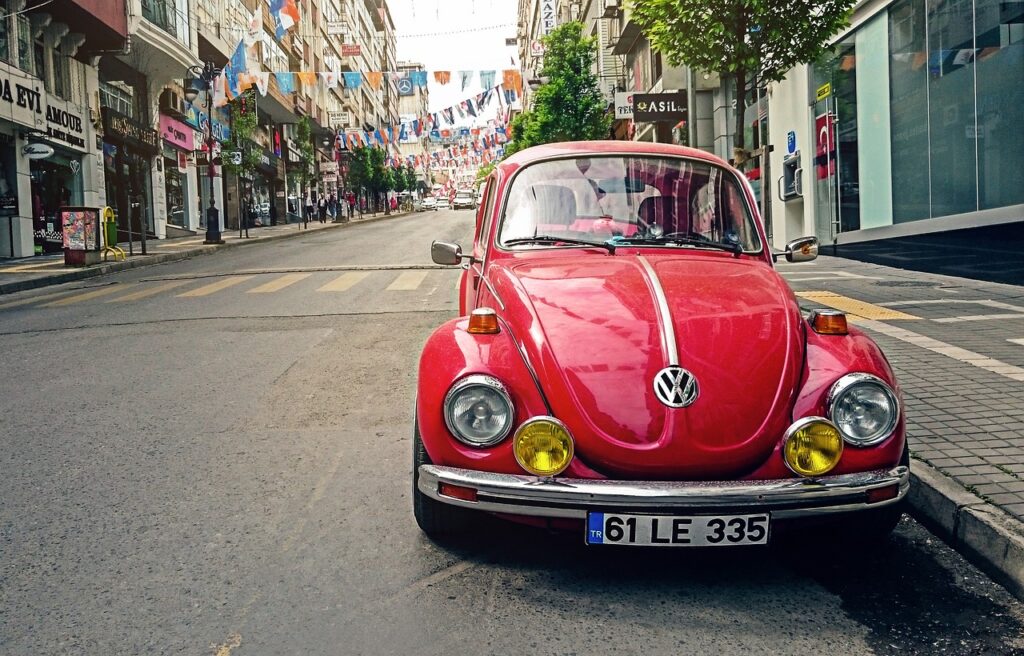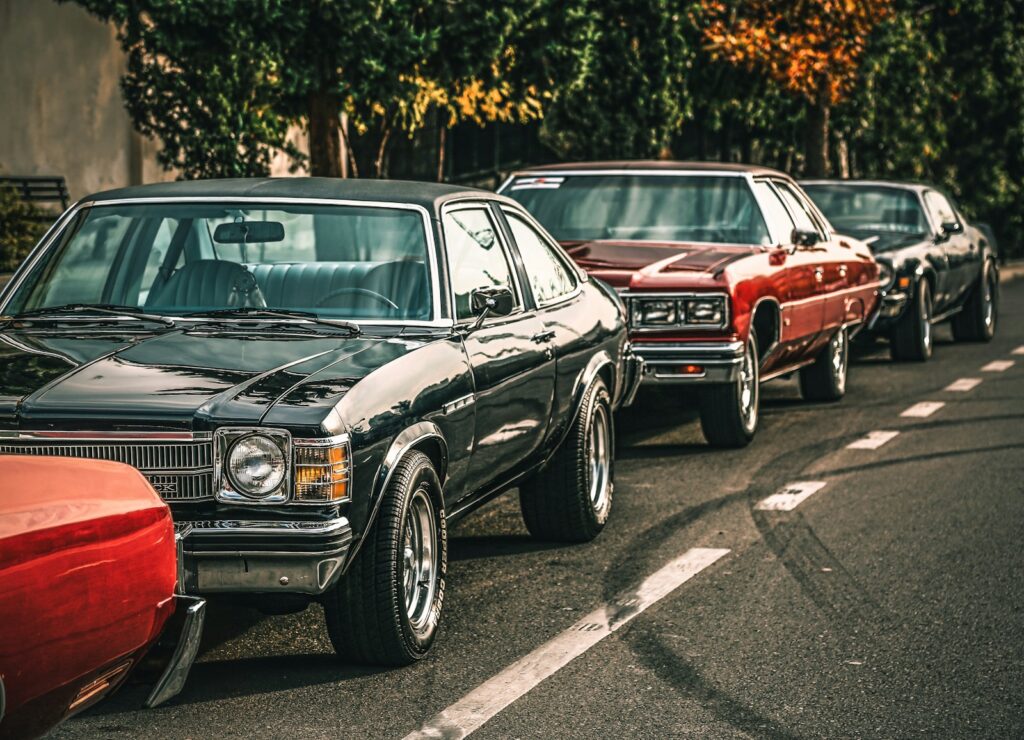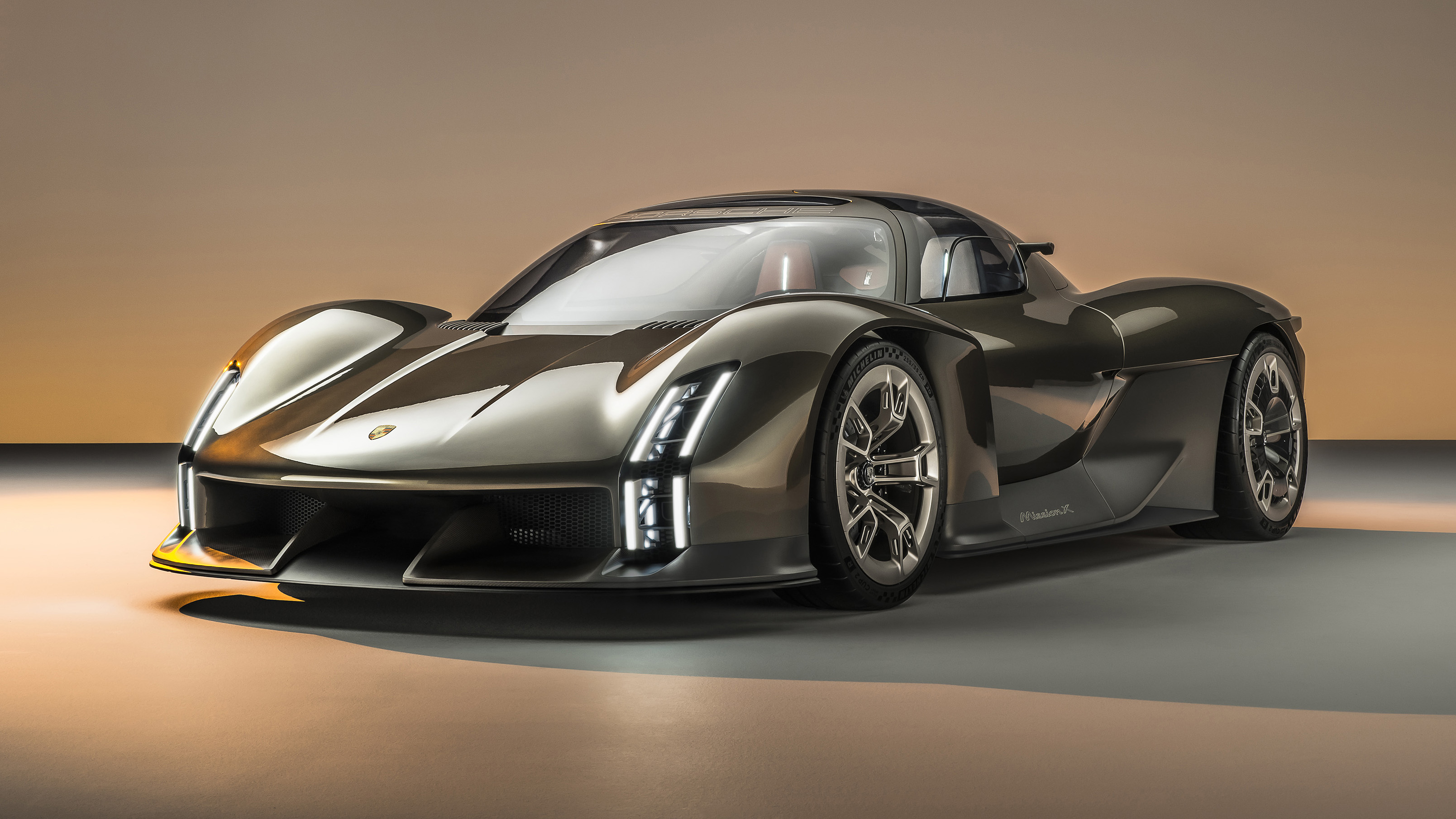
In the ever-evolving landscape of automotive ownership, where every decision from trim level to tire choice can sway your investment, one factor often overlooked holds surprising weight: the color of your car. It might seem like a purely aesthetic preference, a personal statement on wheels, but recent in-depth research reveals that the hue you select at the dealership can significantly impact your vehicle’s resale value years down the line. We’re talking about a difference that can amount to thousands of dollars, a sum substantial enough to warrant a second thought before settling on that classic shade or embracing a fleeting trend.
Automotive reports, such as a comprehensive analysis by vehicle research site iSeeCars, have meticulously tracked the depreciation rates of used cars, unearthing fascinating insights into which colors are financial winners and which are, well, not so much. By comparing inflation-adjusted manufacturer’s suggested retail prices (MSRP) to list prices of over 1.2 million used 2022 models sold between August 2024 and May 2025, a clear picture emerges. The average vehicle, it turns out, sheds approximately 31.0% of its value over the first three years of ownership, but this isn’t a uniform fate for all.
This deep dive aims to equip you with the knowledge to make an informed color choice, not just for today’s enjoyment, but for tomorrow’s bottom line. We’ll explore the colors that defy the average depreciation trend, uncovering why some seemingly unconventional choices can be smart financial moves, while some perennial favorites might silently erode your car’s worth. Get ready to see your car’s color in a whole new light, understanding its tangible impact on everything from market demand to safety perceptions.

1. **Yellow**When it comes to retaining value, yellow cars stand out—literally and financially. According to the iSeeCars study, yellow vehicles depreciate by only 24.0% over three years, making them the undisputed champion among all car colors for value retention. This translates to a dollar difference of $13,667 from the original MSRP, saving owners an estimated $693 compared to the market average depreciation. Executive Analyst Karl Brauer from iSeeCars highlights that yellow, alongside orange, has consistently been a top performer since the company began tracking depreciation by color. The reason is compelling: these aren’t widely popular colors, yet their demand often outstrips their supply, creating a premium in the used market.
Yellow’s vibrant nature isn’t just for show; it also contributes to increased visibility, making it a safer choice on the road. Australia’s Monash University Research Centre suggests that yellow vehicles make it easier for other drivers to spot them quickly, potentially reducing accident risk. While it might be a bold choice, this combination of high visibility and strong financial performance makes yellow an intriguing option for the discerning car buyer. However, it’s worth noting that yellow doesn’t always look good on all vehicles, meaning body style plays a role in its appeal and practicality.
Interestingly, yellow’s strong performance is consistent across several vehicle segments. For coupes, yellow cars experience a mere 14.5% depreciation over three years, commanding a $13,401 dollar difference from MSRP. Convertibles also reward this bright hue, with yellow models depreciating by only 21.4% (a $15,651 difference). Even for SUVs, yellow stands as a top performer with 30.2% depreciation, significantly better than the segment average. While yellow excels at hiding dust and pollen, it does tend to emphasize mud splashes after a rainy drive, which is a maintenance consideration for owners.
Regionally, yellow consistently holds its ground as the color with the lowest depreciation across all top 50 U.S. metro areas analyzed, from Miami-Ft. Lauderdale to Indianapolis. In New York, for instance, yellow cars show a 21.5% depreciation, while in Los Angeles, it’s 21.9%. This widespread appreciation for yellow’s retained value underscores its strength as a strategic color choice for car owners nationwide, demonstrating that its demand-over-supply dynamic is a truly national phenomenon.
Read more about: Navigating the New Golden Age of Travel: 12 Essential Insights for Retirees
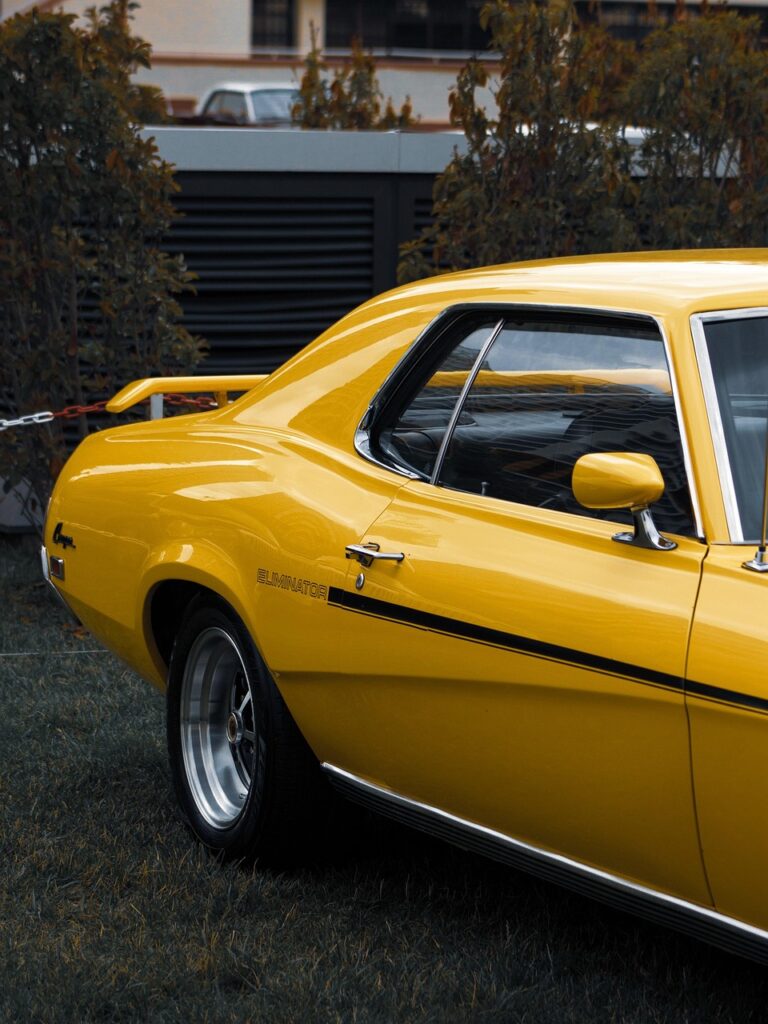
2. **Orange**Closely following yellow in value retention is orange, which shows an impressive 24.4% depreciation over three years, equating to a $9,951 difference from MSRP. Like yellow, orange benefits from a unique market dynamic: it’s not a common color, but it enjoys a dedicated following, creating a favorable balance of demand and supply in the used car market. Karl Brauer emphasizes that this scarcity combined with focused demand translates directly into higher resale value, making it a surprisingly shrewd choice for many.
Beyond its financial benefits, orange also offers safety advantages. Driving an orange vehicle reduces accident risk, as its rarity on the roads makes it inherently stand out to other drivers. This high visibility, coupled with its distinctive appearance, ensures that an orange car is hard to miss. However, while it commands attention, orange is not as easy to keep clean as some neutral shades, requiring more diligent maintenance to maintain its striking appearance.
Orange particularly shines in specific vehicle segments. For pickup trucks, it’s the absolute best color for retained value, losing only 16.0% of its value (a $10,540 difference from MSRP). This is largely due to its adoption by high-performance truck models like the Ford F-150 Raptor and Toyota Tacoma TRD Pro. Similarly, in SUVs, orange ranks highest for value retention at 27.1% depreciation, while for sedans, it leads with a 25.3% depreciation. Coupes (18.4% depreciation) and convertibles (19.8% depreciation) also see orange as a top-tier color for resale, reflecting the segment’s inclination towards expressive, high-visibility choices.
It’s fascinating to note the variation by segment; while orange proves incredibly valuable for many vehicle types, it conspicuously fails to make the list for minivans. This absence suggests a clear rejection of bright, bold colors by minivan buyers, perhaps preferring more subdued tones for family transportation. This highlights a crucial takeaway: the impact of color isn’t universal and must be considered in the context of the specific vehicle type. Despite this, for many drivers seeking a bold statement that pays dividends at resale, orange remains a top contender.
Read more about: Beyond the Hangar Doors: A Deep Dive into Jerry Seinfeld’s Legendary Porsche Inventory – From Historic Racers to Ultra-Rare Roadsters
3. **Green**Green cars, perhaps surprisingly to some, also demonstrate strong value retention, coming in third overall with a 26.3% depreciation over three years, which represents a $13,152 difference from the MSRP. This places green firmly among the best car colors for resale value, outperforming the overall average depreciation significantly. While it might not have the flashy rarity of yellow or orange, green car ownership still suggests a demographic that values a unique aesthetic without sacrificing financial prudence.
However, the performance of green is notably nuanced across different vehicle segments. It’s an exceptional choice for minivans, topping the list with an astonishingly low 15.3% depreciation, a $7,145 difference from MSRP, suggesting that minivan buyers, despite shying away from yellow or orange, appreciate a distinctive yet milder shade. Green also performs very well for pickup trucks, ranking second with a 19.3% depreciation (a $9,268 difference), and for convertibles, where it shows a 27.4% depreciation. This indicates that for certain utility or leisure-oriented vehicles, green signifies an appealing blend of uniqueness and style.
On the other hand, green experiences a significant drop in value retention for sedans, ranking as the second-worst color in that segment with a 33.8% depreciation ($19,653 difference). This stark contrast highlights that while green can be a smart choice for an SUV, pickup, or minivan, new car buyers considering a sedan might want to steer clear to protect their investment. As Brauer notes, “Apparently used sedan buyers don’t appreciate a green vehicle,” a critical piece of advice for prospective sedan owners.
From a maintenance perspective, green cars are relatively easy to keep clean, surprising many owners. However, it’s worth noting that green tends to show imperfections more readily than colors like gray, silver, or white. Furthermore, green cars are among those frequently stolen, according to the National Insurance Crime Bureau (NICB), alongside black, silver, white, and gold vehicles. This dual consideration of maintenance ease and theft risk adds layers to the decision-making process for those eyeing a green vehicle.
Read more about: Navigating the Chill: Essential Tips for Maximizing Your EV’s Performance and Range This Winter
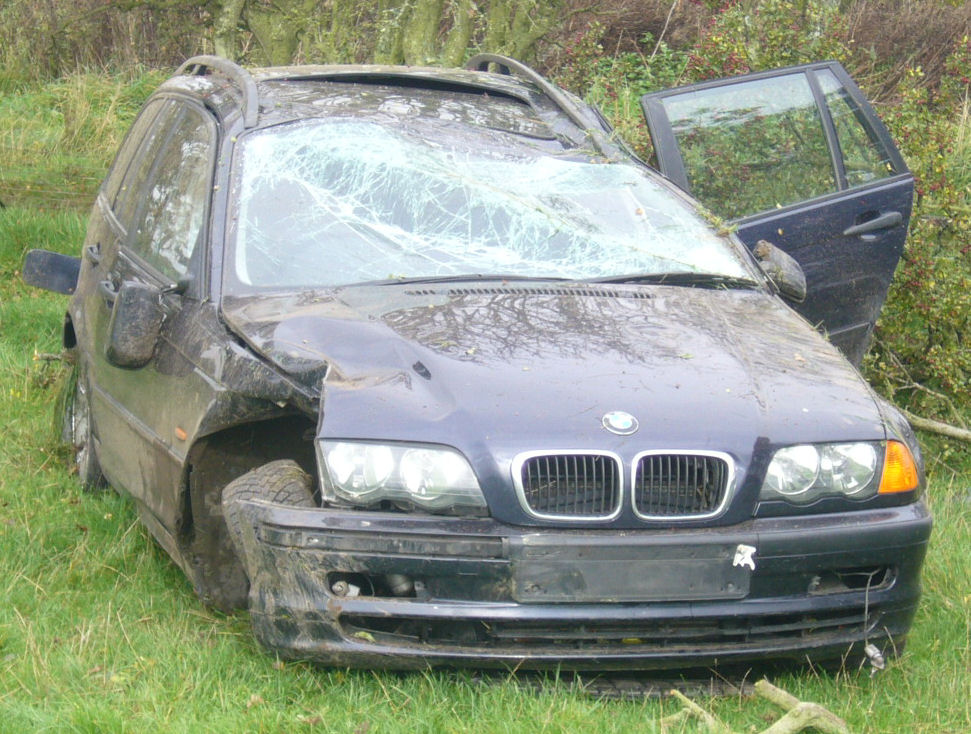
4. **Beige**Beige cars offer an above-average performance in value retention, experiencing a 29.5% depreciation over three years, which translates to an $18,455 difference from the MSRP. While not as dramatic in its value retention as yellow or orange, beige still represents a more financially sound choice compared to the overall market average of 31.0%. This suggests that for those seeking a neutral, understated look that also supports resale value, beige is a strong contender.
Beige’s appeal often lies in its subtle elegance and practicality. It’s a color that blends seamlessly into various environments and is generally perceived as a safe, conventional option. This perception of reliability and timelessness can contribute to its consistent demand in the used market, preventing the steeper depreciation seen in less favored colors. It’s a testament to the idea that sometimes, playing it safe with color can indeed benefit your bottom line when it’s time to sell or trade in your car.
Within specific segments, beige demonstrates varying degrees of success. For SUVs, it’s a solid performer, ranking fourth with a 30.7% depreciation. For sedans, wagons, and hatchbacks, beige holds its own, coming in third with a 27.8% depreciation. This indicates that in family-oriented or practical vehicle categories, beige continues to be a respected and valued choice. However, in pickup trucks, beige falls to near the bottom with a 28.7% depreciation, suggesting that truck buyers might prefer more rugged or distinct colors.
While the context doesn’t explicitly detail beige’s maintenance profile, its neutral, earthy tone likely offers a decent ability to camouflage light dust and dirt, similar to other lighter, non-metallic hues. This practical aspect, combined with its respectable resale value, makes beige a sensible and dependable choice for buyers who prioritize both aesthetics and financial return without venturing into more vibrant color territories.
Read more about: Why Your Custom Mods Might Be Fighting the Engineers: 12 Exterior Design Elements Car Designers Really Wish You’d Leave Alone
5. **Red**Red cars show a commendable 29.8% depreciation over three years, placing them comfortably above the overall market average of 31.0%. This represents a $13,013 difference from the MSRP, signaling that red remains a solid choice for maintaining value. Red cars embody a sense of energy and style, appealing to buyers who desire a vehicle that makes a statement without necessarily sacrificing practical considerations like resale potential.
Red’s performance is relatively consistent across several popular segments. For SUVs, red cars experience a 31.4% depreciation, placing them in the middle of the pack for value retention within that category. Minivans see red cars depreciate by 30.5%, which is better than the minivan average of 40.9%, making it a relatively strong choice for this segment. Similarly, for sedans, wagons, and hatchbacks, red cars show a 28.3% depreciation, again outperforming the segment average.
In the more performance-oriented categories, red continues to be a popular and value-retaining option. For coupes, red vehicles depreciate by 21.1%, while convertibles see a 29.6% depreciation for red models. This suggests that the classic association of red with sportiness and performance translates into sustained demand and better resale value in these particular market segments, where buyers often seek to express a more dynamic personality through their vehicle choice.
From a maintenance perspective, red cars are noted for hiding mud easier than some other colors. However, a significant drawback is that red can become dull if dirty, meaning regular cleaning is essential to keep its vibrant appeal intact. Despite this, red’s enduring popularity and above-average resale performance confirm its status as a color that appeals to a broad range of car buyers, balancing aesthetic appeal with financial foresight.
Read more about: The Road to 100,000+ Miles: Essential Lessons from Long-Term Single-Car Ownership
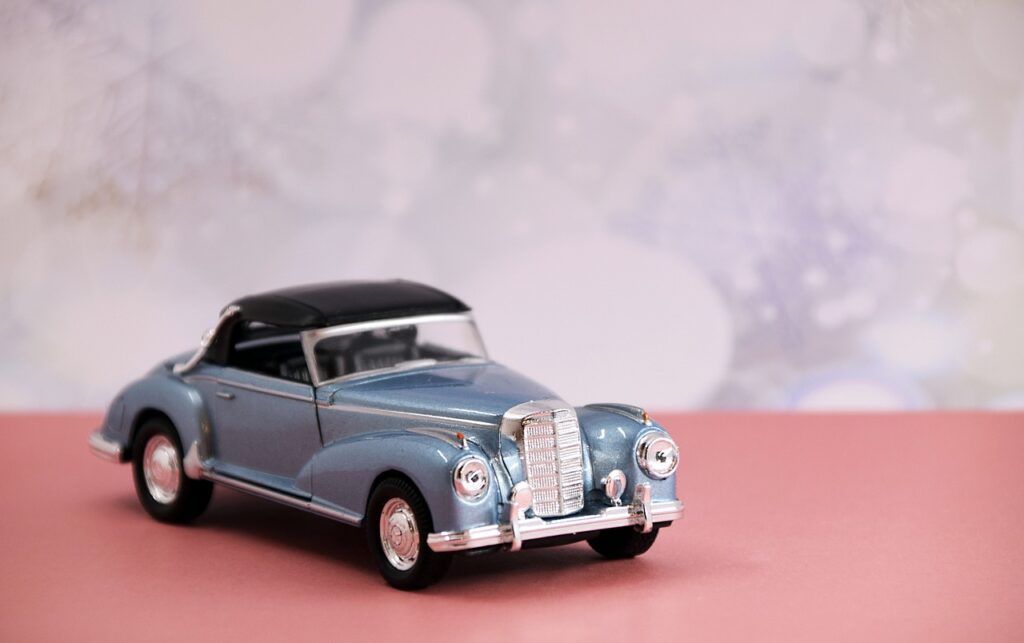
6. **Silver**Silver cars retain their value quite well, with a 29.8% depreciation over three years, identical to red, and performing better than the overall market average. This translates to a $12,636 difference from the MSRP, indicating that silver remains a reliable option for resale value. Historically a popular choice, silver continues to be a favored neutral that offers a blend of sophistication and practicality, which resonates well with a wide base of used car buyers.
Silver’s popularity extends across many vehicle types, though its resale performance varies by segment. For pickup trucks, silver vehicles depreciate by 27.0%, which is slightly better than the truck segment average, showcasing its utility appeal. In the minivan segment, silver stands out as a strong performer, with only 29.2% depreciation, significantly better than the minivan average of 40.9%, suggesting it’s a dependable and valued option for family vehicles. For sedans, wagons, and hatchbacks, silver performs well with a 28.0% depreciation, indicating its broad appeal across practical passenger cars.
Luxury cars also see silver as a solid choice, with 10.5% of new luxury cars being silver, and its resale value remaining strong. For coupes, silver cars experience a 20.1% depreciation, performing above average for the segment. However, in the convertible segment, silver experiences a much higher depreciation of 39.5%, making it one of the least value-retaining colors for drop-tops, underscoring how segment-specific trends can drastically alter a color’s financial performance.
Maintenance-wise, silver is among the easiest colors to keep clean, alongside gray. It excels at hiding dust and dirt longer, and it also tends to camouflage mud buildup, particularly near the rocker panels. This makes silver a highly practical choice for owners who prefer a vehicle that looks cleaner for longer with less frequent washing. However, the National Insurance Crime Bureau reports that silver cars are among the most stolen, a factor that prospective buyers should consider, balancing convenience and value retention with potential security risks.
Having explored the colors that best retain their value, it’s equally crucial for car buyers and owners to understand the nuances of other popular, and sometimes less financially rewarding, shades. The overall market average sees a vehicle depreciate by 31.0% over three years, a benchmark against which all colors are measured. While some neutral tones still outperform this average, others, despite their widespread popularity, surprisingly fall short, highlighting a complex interplay between consumer preference and market dynamics.
This section will delve into the impact of the remaining six car colors, providing a comprehensive analysis of their depreciation rates, segment-specific trends, and additional factors like maintenance and theft risk. By understanding these diverse outcomes, consumers can make more informed decisions, balancing personal aesthetic preferences with long-term financial foresight.
Read more about: The Road to 100,000+ Miles: Essential Lessons from Long-Term Single-Car Ownership
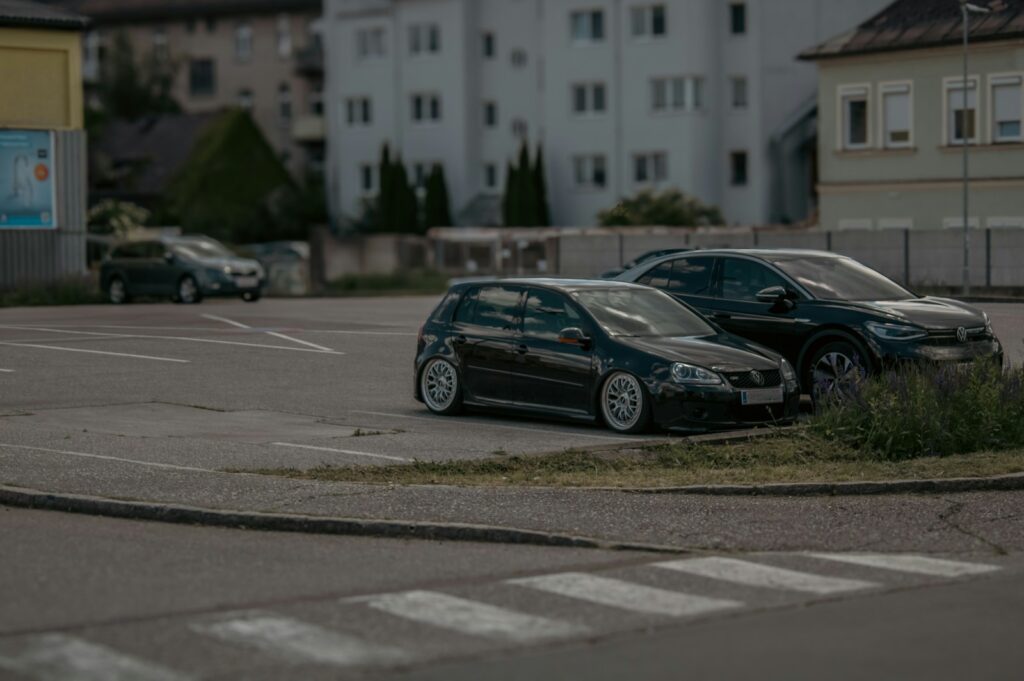
7. **Brown**Brown cars present an interesting case in the automotive color spectrum, typically exhibiting an above-average performance in value retention with a 30.4% depreciation over three years. This rate is notably better than the overall market average and translates to a $14,197 difference from the original MSRP. While not as attention-grabbing as yellow or orange, brown often appeals to a segment of buyers looking for a sophisticated, earthy tone that still offers a degree of uniqueness compared to more common neutrals.
The performance of brown, however, varies significantly across different vehicle segments, underscoring the importance of matching color to body style. For minivans, brown is an exceptionally strong performer, ranking second with a mere 21.3% depreciation, equating to a $9,826 difference. This suggests that minivan buyers, despite shying away from brighter hues, appreciate brown as a distinctive yet practical choice for family transportation.
Conversely, brown struggles in other popular segments. For SUVs, it ranks near the bottom, experiencing a 33.4% depreciation. In sedans, brown is among the worst performers, with a 31.9% depreciation, placing it among the bottom three colors for value retention in that category. This disparity highlights that while brown can be a wise choice for certain vehicle types, especially those prioritizing subtle distinction, it can significantly hinder resale value in others.
Read more about: Beyond the Bumper: 14 Fender Bender Mistakes Drivers Make That Body Shops Really Wish You’d Stop Minimizing
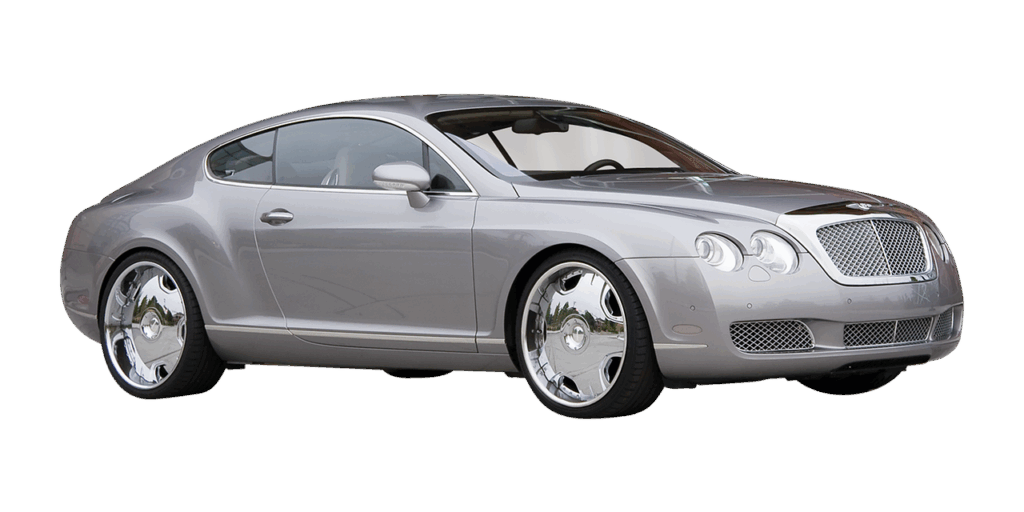
8. **Gray**Gray cars typically offer above-average value retention, depreciating by 30.5% over three years, which is just slightly better than the overall market average. This performance represents a $13,648 difference from the MSRP, positioning gray as a reliable, if not spectacular, choice for preserving investment. Gray’s widespread appeal stems from its sophisticated neutrality, offering a sleek look that is both modern and understated, making it a perennial favorite among many buyers.
Achromatic colors, including gray, have seen a general gain in popularity, with lighter shades specifically gaining market share as some gray shades were retired. Volkswagen’s director of product planning, Serban Boldea, notes that 80% of car consumers opt for white, black, silver, and gray largely due to resale value, considering them the “most simple and safe colors.” This sustained demand helps to stabilize its value in the used car market.
Gray’s performance across segments is generally solid. For pickup trucks, it performs better than average with a 24.5% depreciation, ranking third. In SUVs, it shows a 31.7% depreciation, while for sedans, wagons, and hatchbacks, it maintains a respectable 29.3% depreciation. It also performs well for coupes (21.2% depreciation) and convertibles (31.1% depreciation), showcasing its versatility. However, minivans see gray ranking near the bottom with a 43.1% depreciation, suggesting a clear preference for different shades in that category.
From a practical standpoint, gray is renowned as one of the easiest colors to keep clean. It excels at hiding dust and dirt, allowing vehicles to maintain a cleaner appearance for longer periods. This low-maintenance quality further enhances its appeal, contributing to its consistent demand and relatively stable resale value, even if it doesn’t offer the premium boost seen with rarer colors.
Read more about: The Road to 100,000+ Miles: Essential Lessons from Long-Term Single-Car Ownership
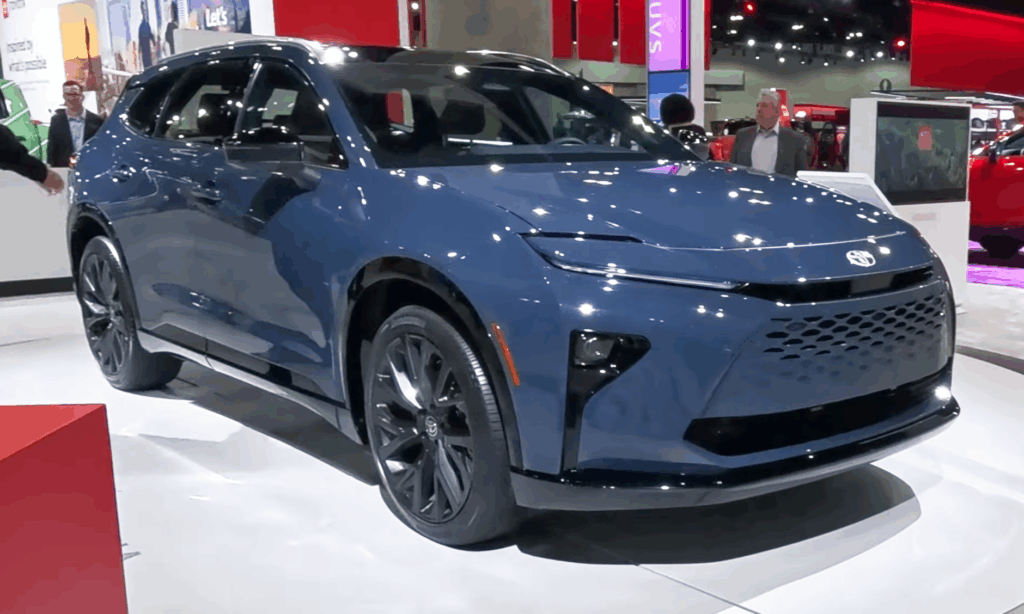
9. **Blue**Blue cars, according to the iSeeCars study, typically experience a 30.9% depreciation over three years, which is just slightly better than the overall market average, resulting in a $13,994 difference from the MSRP. This places blue in a favorable position compared to the average, appealing to buyers who desire a touch of color without venturing into the bolder, more polarizing choices like yellow or orange. Its popularity is reportedly rising, with some car paint experts noting increased consumer demand for broader and more colorful choices.
Segment-wise, blue demonstrates strong performance in certain categories. For coupes, blue vehicles show a strong 19.0% depreciation, ranking third and reflecting a preference for expressive colors in this segment. Convertibles also reward blue, with a 29.3% depreciation, ranking fourth. Even for pickup trucks, blue is a better-than-average option, experiencing a 26.2% depreciation. These figures suggest that blue offers a good balance between aesthetic appeal and financial prudence for specific vehicle types.
However, blue’s performance is not universally stellar. It experiences a 33.1% depreciation in SUVs and a 30.6% depreciation in sedans, which are closer to or slightly worse than the overall average for those segments. While consumers still choose neutral colors, with silver gaining popularity, blue’s growth reflects a trend towards slightly more personalized choices, particularly in less practical car types like compacts, where candy-colored blues are more common.
From a maintenance perspective, blue presents some challenges. It is generally harder to keep clean, as blues tend to show water spots easily. Additionally, scratches and swirl marks can appear quickly on this color, demanding more diligent care from owners to preserve its appearance. Despite these maintenance considerations, blue’s overall value retention and growing popularity make it a compelling option for those seeking a stylish yet financially sound vehicle.
Read more about: The Road to 100,000+ Miles: Essential Lessons from Long-Term Single-Car Ownership
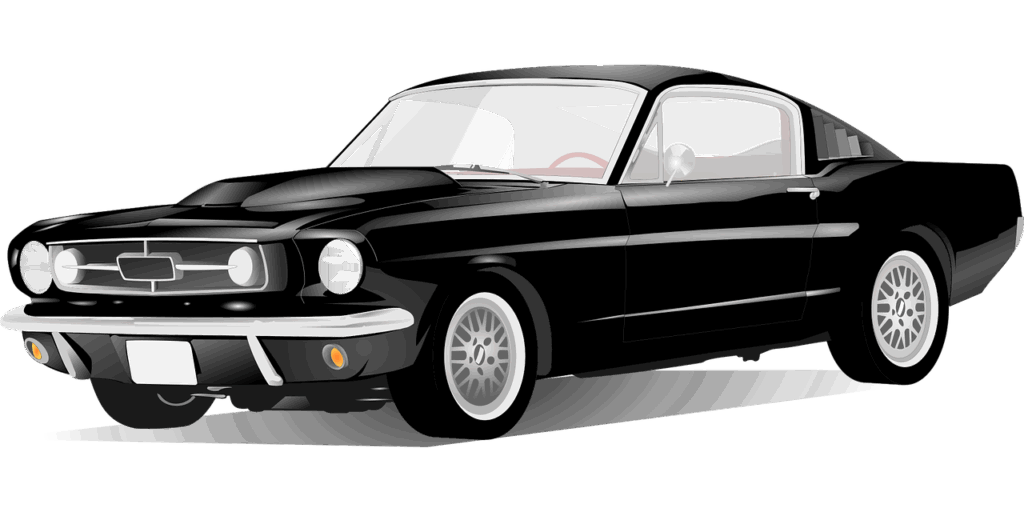
10. **Black**Black cars, despite their enduring popularity and sophisticated appeal, exhibit a below-average value retention, depreciating by 31.9% over three years. This rate is worse than the overall market average and translates to a $15,381 difference from the MSRP, placing it among the colors that lose the most value. Black is often chosen for its sleek appearance and ability to showcase styling, making it a common sight on luxury and performance vehicles.
Karl Brauer, Executive Analyst at iSeeCars, explains this phenomenon: “White and black are the two most common car colors, which suggests plenty of people want them. But it also means those colors provide zero distinction in the used market, reducing their value and making it easy for buyers to shop around for the lowest-priced model in these shades.” This oversaturation in the market contributes to its higher depreciation.
Across various segments, black consistently ranks among the poorer performers for value retention. For SUVs, it’s the least valuable, depreciating by 33.6%. In minivans, black cars lose 42.4% of their value, ranking sixth from the top in depreciation. Even in coupes, where black takes the lead in new car sales (21%), it falls to the bottom for resale value with a 24.9% depreciation, and similarly ranks poorly for convertibles.
Maintenance is another significant consideration for black cars. While “sleek black looks fantastic on almost any car,” it’s a “double-edged sword” as it “looks best when fresh from the car wash. Give it a few minutes; it will likely be covered with pollen, dirt, and dust.” This demanding upkeep, combined with its higher depreciation and a higher risk of theft as reported by the National Insurance Crime Bureau (NICB), suggests that buyers prioritize aesthetics over long-term financial return when choosing black.
Read more about: The Road to 100,000+ Miles: Essential Lessons from Long-Term Single-Car Ownership
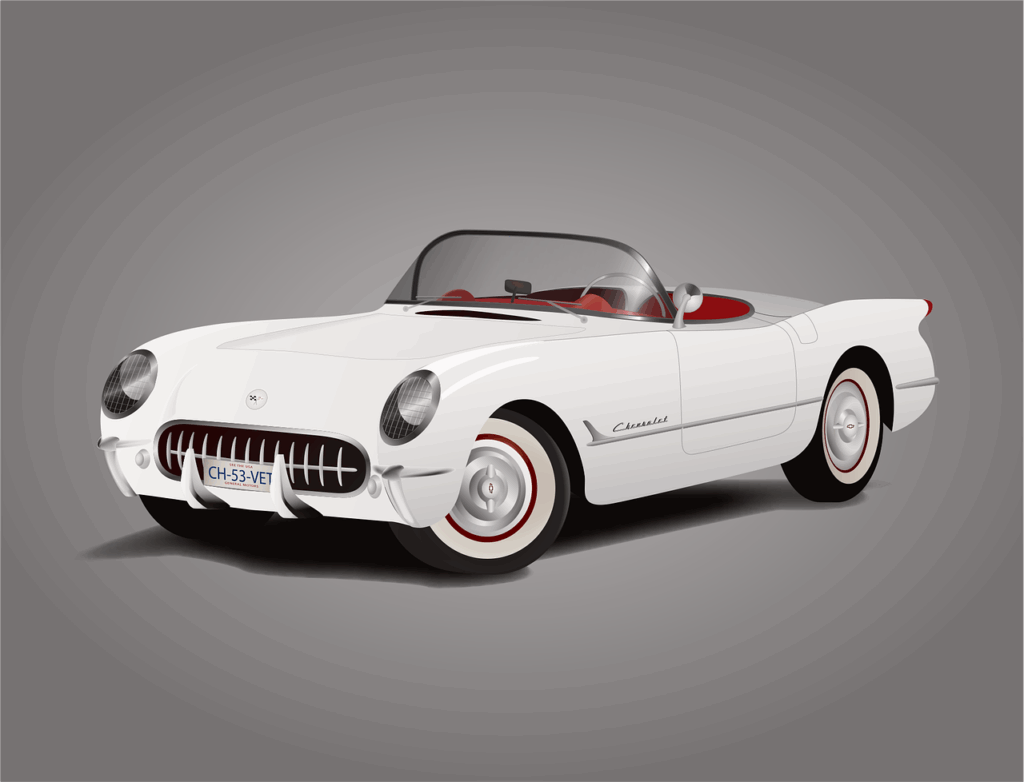
11. **White**White cars, while consistently ranking as the most popular color choice for new car buyers, also fall into the category of colors that experience above-average depreciation. They lose 32.1% of their value over three years, which is worse than the overall market average and results in a $15,557 difference from the MSRP. White’s dominance in new car sales, often topping lists for SUVs, minivans, trucks, luxury cars, sedans, and compacts, creates a paradoxical effect on its resale value.
As Karl Brauer points out, “White and black are the two most common car colors… But it also means those colors provide zero distinction in the used market, reducing their value and making it easy for buyers to shop around for the lowest-priced model in these shades.” This high supply translates to a less competitive used market for sellers, impacting value retention.
White’s depreciation is consistently high across most vehicle segments. For pickup trucks, it’s worse than average at 28.3% depreciation, and for SUVs, it’s among the least valuable with 33.2% depreciation. Minivans see white cars depreciate by a significant 43.9%, placing it at the very bottom. Even in sportier segments like coupes and convertibles, where white is common, it ranks poorly for value retention, with 25.8% and 33.5% depreciation respectively.
Despite the depreciation, white offers significant advantages in other areas. It is considered the safest car color, with a 12% lesser chance of accident involvement compared to black vehicles in all types of weather and lighting, according to Australia’s Monash University. Furthermore, white is categorized as easy to care for, hiding swirl marks from automatic car washes and tending to look newer for longer, although it does show mud and splashes more easily than gray or silver. However, like black, white cars are frequently stolen, according to the NICB, a factor that must be weighed against its safety and ease of maintenance.
Read more about: The Road to 100,000+ Miles: Essential Lessons from Long-Term Single-Car Ownership
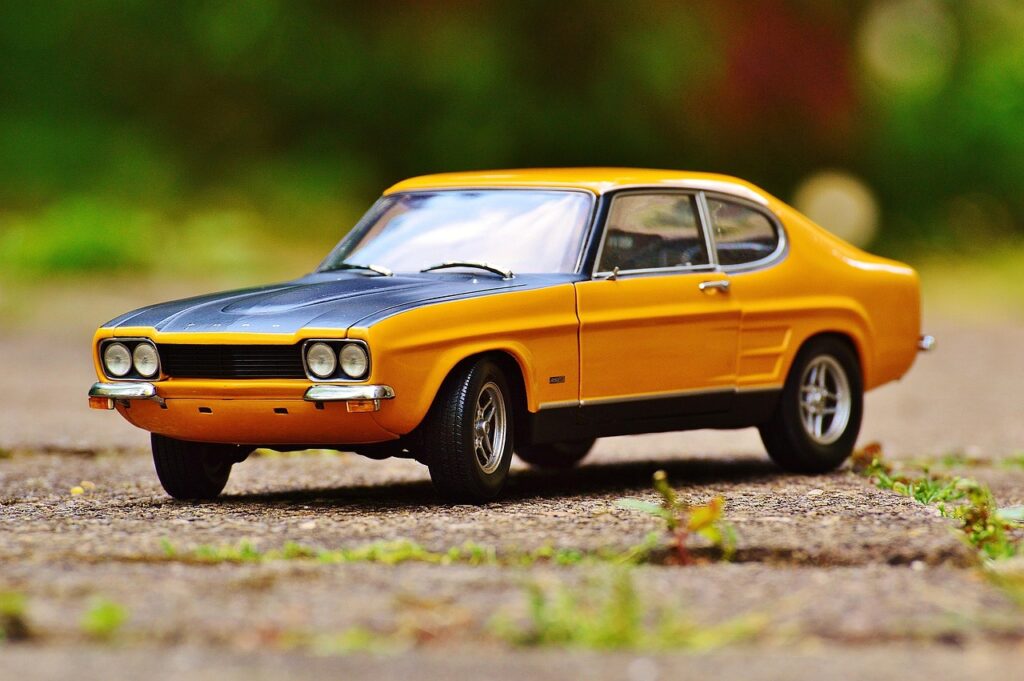
12. **Gold**Gold cars represent the unfortunate bottom of the depreciation scale, experiencing the highest loss of value at 34.4% over three years. This significantly underperforms the overall market average and results in a substantial $16,679 dollar difference from the MSRP, making it the least financially sound color choice for car owners hoping to maximize resale value. The context implies that gold, much like black and white, offers “zero distinction in the used market,” reducing its value as buyers can easily find lower-priced alternatives.
While gold might offer a sense of luxury or uniqueness to a niche market, its lack of widespread appeal in the used car market severely impacts its long-term worth. Its limited presence in popular car color reports, often tied with “beige” or “gold/beige” and registering minimal percentages in various segments (0.5% for SUVs, 1% for luxury cars, 2% for sedans), further illustrates its low demand.
Segment-specific data underscores gold’s poor performance. It ranks as the absolute worst color for sedan value retention, with a staggering 37.9% depreciation. For SUVs, while not the worst, it still experiences a 31.4% depreciation, which is still above the average for that segment. This consistent underperformance across different vehicle types makes gold a particularly risky choice for buyers concerned about future resale.
Interestingly, gold vehicles are listed among the safest car colors, tending to stand out for the same reasons as orange, thereby potentially reducing accident risk. However, this safety benefit is overshadowed by its significant depreciation rate and the fact that gold cars are also frequently stolen, according to the National Insurance Crime Bureau. For the consumer, choosing gold means accepting a substantial financial sacrifice in exchange for a distinctive, yet ultimately low-demand, aesthetic.
Read more about: America’s Manufacturing Resurgence Will Be Powered by These Robots: A Look at the Nation’s Enduring Capacity for Innovation
As we’ve navigated the complex world of car colors and their impact on resale value, a clear picture emerges: while personal preference plays a significant role in any purchase, understanding the market’s response to different hues can profoundly affect your financial outcome. From the surprising resilience of yellow and orange to the steeper depreciation of popular neutrals like black and white, the data from iSeeCars offers invaluable insights. Ultimately, the decision rests with the individual, but armed with this comprehensive analysis, you can make a choice that not only pleases your eye but also respects your wallet, proving that sometimes, a little foresight in color can make all the difference when it’s time to part ways with your vehicle. The automotive landscape is always evolving, and staying informed about these trends is key to being a smart car owner.


